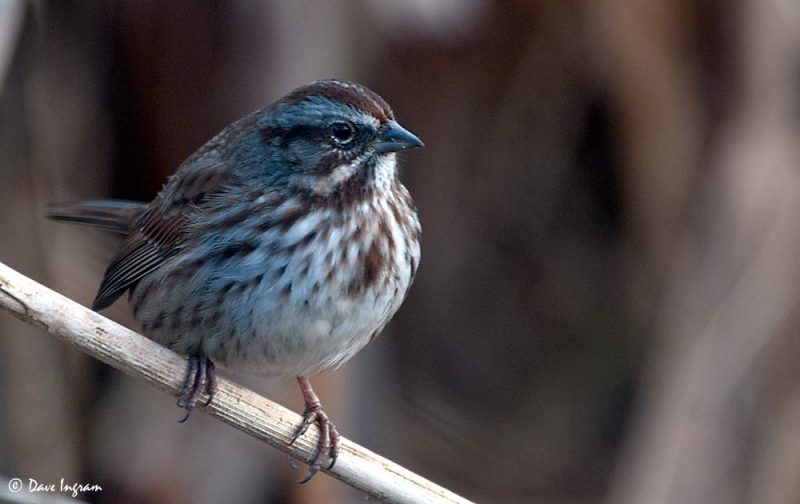I did a little afternoon birding with the kids down at the Courtenay Estuary. There’s a nice easy paved walkway that runs from the parking area on Mansfield Drive in two directions – one way takes you around the Airpark Lagoon proper and the other follows the edge of the estuary towards Millard Creek. I usually do the lagoon loop but I didn’t have much time today and wanted to avoid the distraction of the Rotary playground so I walked with the kids in the opposite direction.
The pathway gives excellent views out over the estuary and is edged on the water side with areas of cattails and grasses which provide good sparrow habitat. The land side is fairly heavily developed with older condo/low apartments/housing complexes but since the estuary is the main attraction they’re easy to ignore.
I focused as best I could on keeping an eye out for sparrows and other interesting birds while also keeping an eye on two children under the age of four. Fortunately they’re both also very interested in birds (with a little encouragement).
I got a good look at a marsh wren (Cistothorus palustris) and attempted to photograph it but it proved too elusive, skulking down in the grass and cattails. I had to settle for a common song sparrow (Melospiza melodia) that responded to my pishing.

The song sparrow is described by Sibley as “one of the most familiar songbirds across much of North America.” There are at least 24 described subspecies making it fairly challenging to identify if you see one while traveling because of the variation in colour, size and shape of the bird depending on the geographical region. I know that I’ve done a number of double-takes when I’ve encountered song sparrows outside of the Pacific Northwest.
On Vancouver Island, the song sparrow is generally darker brown overall than eastern birds and seems to be less clearly streaked – sometimes the streaks are described as being coarsely streaked. For a good comparison of the different variations read Song Sparrows – 39 and Counting (Subspecies that is…) over at 10000 Birds. It’s a great overview of the complexity of identifying this bird from a regional perspective.
A somewhat common sparrow in some ways, but nonetheless great to get a good look at it. The kids liked it too.